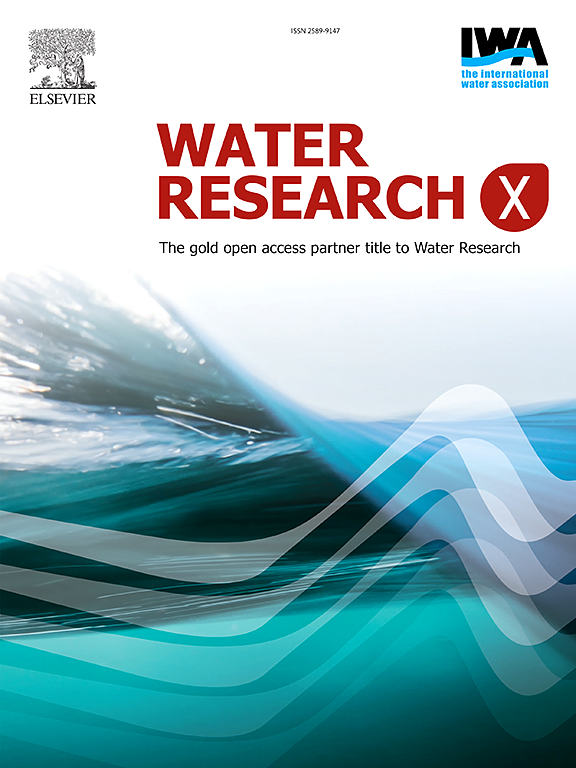生物炭增强污泥厌氧消化:比较性能和机理的见解
IF 8.2
2区 环境科学与生态学
Q1 ENGINEERING, ENVIRONMENTAL
引用次数: 0
摘要
厌氧消化(AD)是一种可持续的污泥稳定和能量回收方法,但其效率往往受到微生物不平衡和中间积累的限制。添加生物炭是一种很有前途的增强AD的策略,然而,其有效性的机制,特别是生物炭来源的影响,仍然没有得到充分的了解。本研究系统比较了玉米秸秆衍生生物炭(CSBC)、混合秸秆衍生生物炭(MSBC)和消化污泥衍生生物炭(SSBC)对污泥AD中甲烷生成、微生物群落结构和电子转移过程的影响。结果表明,添加CSBC (10 g/L)对甲烷累积产率的提高最为显著,达到153.7 mL/g VS,较对照提高了122.1%。这种优异的性能与CSBC丰富的含氧官能团(OFGs)密切相关,它促进了更高的氧化还原活性(比SSBC/MSBC高12- 15%)和电子传递系统活性(比对照高81.1%)。微生物学分析显示,CSBC富含电子转移菌(如Bacteroidetes_vadin HA17)。相反,MSBC主要促进水解,而SSBC优先刺激氢营养产甲烷菌。这些发现表明,生物炭的表面化学和电化学性质是微生物相互作用和甲烷产量的关键决定因素,为设计量身定制的生物炭以优化AD中的废物价值和能量回收提供了重要见解。该研究提供了污泥AD中秸秆与污泥衍生生物炭的独特比较,强调了SSBC在循环经济背景下的潜力,并强调了将生物炭特性与功能性微生物活性联系起来的重要性。本文章由计算机程序翻译,如有差异,请以英文原文为准。

Biochar-enhanced anaerobic digestion of sewage sludge: Comparative performance and mechanistic insights
Anaerobic digestion (AD) is a sustainable approach for sewage sludge stabilization and energy recovery, but its efficiency is often limited by microbial imbalance and intermediate accumulation. Biochar addition is a promising strategy for enhancing AD, however, the mechanisms underlying its effectiveness, particularly the impact of biochar origin, remain insufficiently understood. This study systematically compared corn stover-derived biochar (CSBC), mixed straw-derived biochar (MSBC), and digested sludge-derived biochar (SSBC) regarding their effects on methane production, microbial community structure, and electron transfer processes in sewage sludge AD. Results revealed that CSBC addition (10 g/L) yielded the most significant enhancement, increasing cumulative methane yield by 122.1 % to 153.7 mL/g VS compared to the control. This superior performance correlated strongly with CSBC's abundant oxygen-containing functional groups (OFGs), which facilitated higher redox activity (kapp 12-15 % greater than SSBC/MSBC) and electron transfer system activity (81.1 % increase over control). Microbial analysis revealed that CSBC was enriched with electron-transferring bacteria (e.g., Bacteroidetes_vadin HA17). Conversely, MSBC primarily facilitated hydrolysis, while SSBC preferentially stimulated hydrogenotrophic methanogens. These findings demonstrate that biochar surface chemistry and electrochemical properties are critical determinants of microbial interactions and methane yield, providing crucial insights for designing tailored biochars to optimize waste valorization and energy recovery in AD. This study offers a unique comparison of straw-versus sludge-derived biochars in sludge AD, highlighting the potential of SSBC in a circular economy context, and underscores the importance of linking biochar properties to functional microbial activity.
求助全文
通过发布文献求助,成功后即可免费获取论文全文。
去求助
来源期刊

Water Research X
Environmental Science-Water Science and Technology
CiteScore
12.30
自引率
1.30%
发文量
19
期刊介绍:
Water Research X is a sister journal of Water Research, which follows a Gold Open Access model. It focuses on publishing concise, letter-style research papers, visionary perspectives and editorials, as well as mini-reviews on emerging topics. The Journal invites contributions from researchers worldwide on various aspects of the science and technology related to the human impact on the water cycle, water quality, and its global management.
 求助内容:
求助内容: 应助结果提醒方式:
应助结果提醒方式:


